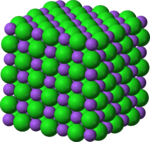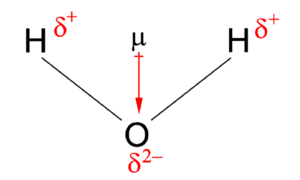Kinds of Matter
Claimed by Kristen Sparks
Claimed by Pranusha Atuluru (Fall 16)
This topic covers the Different Kinds of Matter.
The Main Idea
No matter how how big or small the matter, physics can be applied to all objects. States of matter are differentiated or determined by significant changes that occur due to the alteration of an important property such as specific heat capacity, pressure, or temperature. Specific heat capacity is the heat required to raise the temperature of a unit mass by a given amount (usually by one degree). Pressure is a continuous physical force exerted on or against an object and temperature is the degree of heat present in a substance or object. In different states of matter, things only move from one phase to another through physical means and not chemical where the same chemical properties of the substance is the same.
All matter is made of atoms or molecules. To understand the properties of matter around us we look at atomic properties and interactions. Atomic interactions can be attributed to the attractive and repulsive forces due to the different parts of an atom which are: protons, electrons, and neutrons. Protons are positively charged particles, electrons are negative, and neutrons have no charge. Protons and neutrons make up a small, dense center called a nucleus. Around the nucleus are electrons, whose negative forces are attracted to the positive center.
Solids
Solids are a class of matter that retain their shape and size even when not confined by a container and occupy a specific volume. They are difficult to deform because they are resistant to changes in shape or volume. The molecules in a solid are generally packed together as much as possible to the extent that the repulsive forces between the molecules allow. When a solid is heated or when energy is transferred to a solid, the molecules gain kinetic energy and eventually overcome the intermolecular forces of attraction that hold them in place. If enough kinetic energy is gained, the solid enters a phase change where the solid can become a gas or a liquid.

The process of a solid becoming a liquid is called melting. The temperature at which a solid becomes a liquid is called the melting point. For example, the melting point of ice is 0 degrees Celsius, at which point the ice melts into liquid water. A solid can also change phases into a gas in a single transition phase known as sublimation. An example of this is dry ice (solid CO2) sublimating into carbon dioxide gas in an environment at or near room temperature.
Most solids fall into two main categories: crystalline and amorphous solids. Crystalline solids are solids where the atoms of molecules that make up the solid are arranged in a neat, well-defined arrangement. Four types of crystalline solids include ionic, molecular, atomic, and metallic solids. Amorphous solids are those in which the molecules do not have a definitive arrangement. Although the molecules are close together and have little freedom to move, they are not as well-defined in arrangement as crystalline solids.
Liquid
Liquid is a phase of matter that can flow, change its shape, and take the shape of its container that it is placed within. Liquids are not easily compressed and maintain a relatively fixed volume. Liquids are made up of molecules that are close together like a solid but lack a defined arrangement as a result of weaker intermolecular forces of attraction. The molecules are able to vibrate, move, and slide past each other in a liquid, which is what allows for changes in shape.

While particles of gas bounce everywhere and disperse, liquids remain together due to intermolecular forces called cohesive (sticky) forces that act to pull the molecules together. These attractive forces exist between molecules of the same substance and resist separation of a liquid. The liquid can overcome these cohesive forces when the weight (force applied) reaches a certain point.
When in a liquid phase, the molecules gain kinetic energy much like the molecules in a solid. When the molecules gain enough energy, the liquid is able to phase change into a gas through a process called evaporation. The temperature at which a liquid becomes a gas is called the boiling point. For example, the boiling point of liquid water is 100 degrees Celsius.
Gas
A gas is a sample of matter that has no definitive shape much like a liquid, but expand to occupy the entire available volume. The molecules in the gaseous state move freely among each other and packed more loosely than the molecules of the same substance in the solid or liquid state. This state of matter is what exists between the liquid and plasma phase, and is usually invisible to the human eye due to the large separation between the molecules. Gases have looser intermolecular bonds than liquids and solids and these bonds exist due to electrostatic interactions between the gas particles where like-charged areas repel and opposite-charged areas attract.
When energy is taken out of a gaseous phase, the molecules lose kinetic energy and stop colliding as much. The process in which a gas becomes a liquid is called condensation and occurs at the same temperature as the boiling point. A gas can directly turn into a solid through a process called deposition. An example of this is when CO2 in air sometimes freezes to directly become a solid, skipping over the liquid phase.
Plasma
Like a gas, plasma does not have a definitive shape or volume; therefore, it can expand to occupy the maximum amount of volume available. However, unlike a gas, plasma is made up of ionized molecules that carry electric charge. The entire gas as a whole has no electric charge however, and the density of this gas isn't too high. Plasma exists when positively charged nuclei are floating around in an area of free-floating electrons; it consists of approximately equal numbers of positively charged ions and negatively charged electrons.This makes plasmas electrically conductive and allows allows it to produce magnetic fields or electric currents.
Most plasmas aren't dense enough for particles to collide with one another very often, so the magnetic and electrostatic interactions become more important. Since there are free floating electrons and ions in plasma, the molecules can interact as far greater distances than ordinary gases through electricity and magnetism. Another important characteristic of plasmas is that they can be held in place using magnetic fields, which is different from all the states of matter discussed before.
There are two ways by which a gas can be converted into plasma: 1) either from a huge voltage difference between two points, or 2) exposing it to extremely high temperatures. Heating matter to high temperatures or exposing it to a huge voltage difference causes electrons to leave the atoms, resulting in the presence of free electrons. These free floating charged particles contributes to plasma being electrically conductive.
One of the prime examples of plasma is the solar wind that bombards planets and moons in the Solar System. In the Jovian system, bombarding solar wind, also referred to as ambient thermal plasma, results in local inhomogeneities in the electromagnetic fields surrounding icy moons. These local perturbations have resulted in an induced dipole field in some of these icy moons, notably Europa and Callisto. The maintenance of these induced dipoles suggests the presence of an electrically-conducting subsurface ocean. These discoveries would not have been possible without the use of plasma detection and analysis, as well as the properties of plasmas themselves!
Bose-Einstein Condensate
This is the most mysterious out of the 5 states of matter. Bose-Einstein Condensate is a state of matter of dilute gas of bosons cooled to temperatures very close to absolute zero. A boson is a subatomic particle, such as a photon, that has zero or integral spin. Here, the atoms can no longer bounce around as individuals and instead start acting all as one to a point where they can no longer be differentiated. They have no relative energy to move relative to each other; therefore, they clump together and enter the same energy state. To create Bose-Einstein Condensate, one must start with a cloud of diffuse gas and cool it with lasers, which is potentially using the beams to take energy away from the atoms.
Bose-Einstein condensates were first predicted theoretically by Satyendra Nath Bose (1894-1974). The foundation of this phase of matter proved that atoms must have a certain energy and that the energy of these molecules can't be arbitrary.
Examples
Solid
Examples: ice, sand, wood bricks, steel
Liquid
Examples: water, wine, coffee, blood, rubbing alcohol
Gas
Examples: water vapor, hydrogen, oxygen, helium, propane
Plasma
Examples: lightening, stars, sun, the upper atmosphere
Although not extremely abundant on Earth, plasma exists everywhere in the universe.
Bose-Einstein Condensate
Examples: superfluids (cold liquid helium), superconductors (nucleons inside a neutron star)
Connectedness
Anything that has mass is made up of matter-- it is essential to almost everything that exists in the universe. The different kinds of matter are important to understanding how physics can be applied to everyday life. It helps connect the misunderstood atomic and subatomic level to something that everyone can understand. More advanced physics will correlate atomic bonds to springs, a juxtaposition that helps explain a complex interaction with a simple explanation.
History
The first theories on atomic and subatomic particles began with J. J. Thompson in 1897, when he discovered electrons. An idea made the scientific community realize that atoms were not the smallest particles of matter. Then, in 1909, Ernest Rutherford started experimenting with gold and alpha particles, and this experiment lead to the discovery of nuclei, further developing the atomic theory.
These fundamental discoveries lead to the deep understanding of the atomic world that scientists have today. Without them, the properties of matter and physics would be a grayer area of science.
See also
External links
http://www.livescience.com/46506-states-of-matter.html
References
Matter and Interactions By Ruth W. Chabay, Bruce A. Sherwood - Chapter 1
http://www.sparknotes.com/testprep/books/sat2/physics/chapter19section2.rhtml
http://www.chem4kids.com/files/matter_changes2.html
http://www.shreyasbharadwaj.com/curious-minds/states-of-matter

